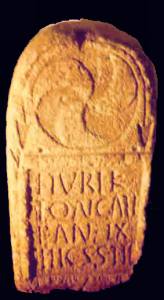-
The Swastika History

The swastika is an extremely powerful symbol. The Nazis used it to murder millions of people, but for centuries it had positive meanings. What is the history of the swastika? Does it now represent good or evil?
The swastika is an ancient symbol that has been used for over 3,000 years. (That even predates the ancient Egyptian symbol, the Ankh!) Artifacts such as pottery and coins from ancient Troy show that the swastika was a commonly used symbol as far back as 1000 BCE.
During the following thousand years, the image of the swastika was used by many cultures around the world, including in China, Japan, India, and southern Europe. By the Middle Ages, the swastika was a well known, if not commonly used, symbol but was called by many different names:
China - wan
England - fylfot
Germany - Hakenkreuz
Greece - tetraskelion and gammadion
India - swastika
Iberian Peninsula - Esvástica or suástica
Though it is not known for exactly how long, Native Americans also have long used the symbol of the swastika.
The word "swastika" comes from the Sanskrit svastika - "su" meaning "good," "asti" meaning "to be," and "ka" as a suffix.
Even in the early twentieth century, the swastika was still a symbol with positive connotations. For instance, the swastika was a common decoration that often adorned cigarette cases, postcards, coins, and buildings. During World War I, the swastika could even be found on the shoulder patches of the American 45th Division and on the Finnish air force until after World War II.
On this issue in Portugal and Galicia in pre-Roman era, existed a people in the north region of Tras-os-Montes called "Zoelas" that inscribed in the gravestones the swastika.

I will pass the meaning of the swastika for the NAZI era that is well described on "Mein Kampf" at page 495 and well known by history on the memories of all 60 million death of the WWII.
And now what about the swastika?
There is a great debate as to what the swastika means now. For 3,000 years, the swastika meant life and good luck. But because of the Nazis, it has also taken on a meaning of death and hate.
These conflicting meanings are causing problems in today's society. For Buddhists and Hindus, the swastika is a very religious symbol that is commonly used. Chirag Badlani shares a story about one time when he went to make some photocopies of some Hindu Gods for his temple. While standing in line to pay for the photocopies, some people behind him in line noticed that one of the pictures had a swastika. They called him a Nazi.
Unfortunately, the Nazis were so effective at their use of the swastika emblem, that many do not even know any other meaning for the swastika. Can there be two completely opposite meanings for one symbol?
In ancient times, the direction of the swastika was interchangeable as can be seen on an ancient Chinese silk drawing.
Some cultures in the past had differentiated between the clockwise swastika and the counter-clockwise sauvastika. In these cultures the swastika symbolized health and life while the sauvastika took on a mystical meaning of bad-luck or misfortune.
But since the Nazis use of the swastika, some people are trying to differentiate the two meanings of the swastika by varying its direction - trying to make the clockwise, Nazi version of the swastika mean hate and death while the counter-clockwise version would hold the ancient meaning of the symbol, life and good-luck.
It is more difficult for some of us to talk about this with a racional mind, even because in the last convulsions of the world, a bit everywhere the symbol is within the national revolutions as we saw in Ukraine. Does Ukrainians have no memory of their on past?
In spite of the division within myself, I can understand the difference between the use for Buddhism, Hinduism, and Jainism or the use by the NAZI.
What do you think about this?
Friends are like diamonds and diamonds are forever



 Posting Permissions
Posting Permissions
- You may not post new threads
- You may not post replies
- You may not post attachments
- You may not edit your posts
-
Forum Rules











 Reply With Quote
Reply With Quote